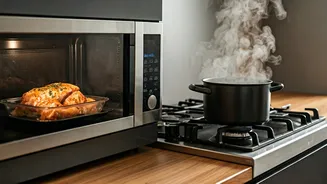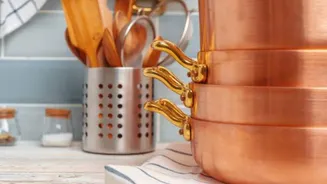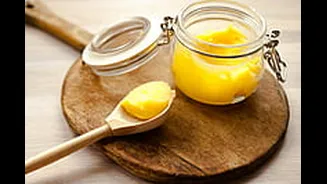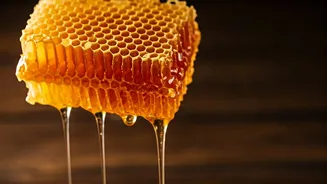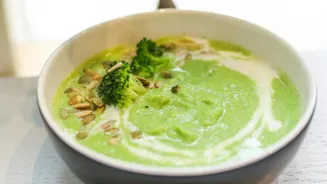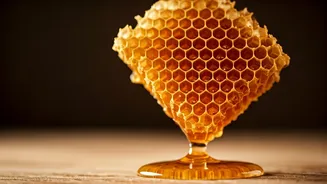Energy Efficiency Face-Off
When it comes to conserving power, the microwave often takes the lead. Microwaves generally consume less energy than stovetops, especially for smaller
portions or quicker tasks. Stovetops, particularly those utilizing electric coils, can be significantly less efficient due to heat loss. Gas stoves, while more efficient than electric in certain aspects, still require energy to heat the entire pot or pan, wasting energy if the food volume is small. For instance, heating a single cup of water is far more efficient in a microwave. However, when cooking larger meals or multiple items simultaneously, the stovetop can sometimes become more efficient as it can cook several items at once. The overall energy efficiency also depends on the type of appliance, its age, and usage patterns. The specific energy consumption for each method also changes based on the type of food and the chosen cooking time. Considering energy usage is crucial for eco-friendly practices and cost savings in the kitchen.
Nutrient Retention Showdown
The method you choose can affect the nutritional value of your food. Microwaves, often wrongly accused, actually excel at nutrient preservation. Because cooking times are usually shorter and water is used (steaming effect), the exposure to heat is limited. This is especially helpful for preserving water-soluble vitamins like vitamin C and B vitamins, which are sensitive to heat. Stovetop cooking, specifically boiling or prolonged simmering, can lead to the leaching of nutrients into the cooking water. High-heat methods, such as frying, may also degrade nutrients, especially if they involve fats that can undergo oxidation at higher temperatures. However, stovetop cooking offers better control over the cooking process, allowing precise timing and heat adjustment. This control is useful for retaining nutrients in certain types of dishes, by using lower heat and shorter cooking times. To maximize nutrient retention with either method, minimizing cooking time and water usage, along with avoiding overcooking, are essential practices.
Flavor and Texture Battle
Flavor and texture differences between microwave and stovetop cooking significantly affect the final outcome of dishes. Stovetops provide superior control over the cooking process, permitting browning, searing, and the development of complex flavors through Maillard reactions. This is virtually impossible in a microwave. The ability to control heat levels gives you the ability to develop rich, layered flavors in foods like meats, vegetables, and sauces. Microwaves, on the other hand, cook by exciting water molecules, which can result in a more even cooking but often with less browning or caramelization. The texture of food cooked in a microwave can vary widely. While some foods maintain moisture and tenderness, others may become rubbery or tough if overcooked. Stovetop cooking allows for a range of textures, from crispy exteriors to tender interiors, and is therefore preferred for dishes requiring specific cooking techniques. The choice between the two methods will heavily depend on the dish being prepared and desired outcome.
Speed and Convenience
When it comes to speed, the microwave typically wins the race. It's often the go-to choice for reheating leftovers, cooking individual servings, or preparing quick snacks. Microwaves can rapidly heat food by directly exciting water molecules, resulting in much shorter cooking times compared to stovetops. Stovetops, on the other hand, require time to heat the pan or pot and then the food, which adds to the overall cooking duration. The convenience factor also tips the scales in the microwave's favor, as it requires minimal cleanup. However, the stovetop is not without its advantages. For example, when cooking multiple items or preparing a large meal, the stovetop can be more efficient, allowing for simultaneous cooking of different elements. This is especially true when it comes to dishes that require multiple steps, like sautéing vegetables before adding sauces. The choice hinges on the situation; microwaves are best for speed and single servings, and stovetops are beneficial for bigger meals and complex cooking.
Versatility in Cooking
Stovetops provide a greater degree of cooking versatility compared to microwaves. The stovetop offers an array of techniques that can't be replicated in a microwave, such as frying, searing, and simmering. Stovetops enable various cooking styles, including stir-frying, braising, and deep-frying, allowing for diverse textures and flavors that are hard to achieve with microwave cooking. You can precisely control heat levels, which is crucial for achieving specific results like perfectly seared steaks or delicately cooked sauces. Microwaves, however, are limited to heating and cooking through the excitation of water molecules, which limits the cooking techniques available. Microwaves excel at steaming vegetables and reheating foods quickly, but they lack the flexibility needed for more complex cooking. The stovetop's versatility is a clear advantage for cooks seeking to explore a wide range of recipes and cooking methods, making it the preferred choice for detailed and complex dishes.
Food Safety Insights
Food safety is a critical element when choosing between the microwave and stovetop. Both methods can effectively cook food and eliminate harmful bacteria, but the process has to be done correctly. The microwave's quick heating can kill bacteria efficiently, provided food is heated to the recommended internal temperature. However, inconsistent heating can be a problem, causing cold spots that allow bacteria to survive. Thorough cooking and proper stirring are essential when using a microwave. Stovetops, with their ability to reach high temperatures and cook food more uniformly, often offer better control over food safety. The consistent and controlled heat helps ensure that all parts of the food reach the safe internal temperature required to eliminate bacteria. When cooking meat and fish, both methods demand careful handling and adherence to safe cooking temperatures. Always check the internal temperature of food with a food thermometer, no matter which method you use, to ensure that it's safe to eat. This approach helps to prevent foodborne illnesses and ensures that meals are safe and enjoyable.
Cooking Common Myths
Several misconceptions surround both microwave and stovetop cooking. A common myth is that microwaves destroy nutrients more than stovetops. As previously discussed, microwaves are often gentler on nutrients since they reduce cooking times. Another myth is that you can't cook certain foods in the microwave. In reality, you can cook many foods, including vegetables, meats, and even cakes. The key is understanding how the microwave heats food and adjusting cooking times accordingly. The myth that stovetop cooking is always healthier and provides better flavor isn't entirely accurate either. While stovetops allow for a wider range of cooking techniques, a microwave can often preserve more nutrients due to the shorter cooking times. It's important to differentiate between methods and understand their properties. Overcoming these misconceptions is key to optimizing your cooking and making informed decisions about which method is best for each dish. Using a method you understand is the key to producing the best results and maximizing your culinary skills.
